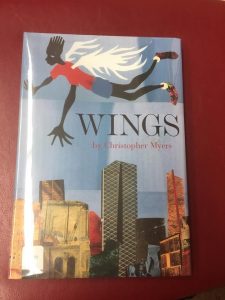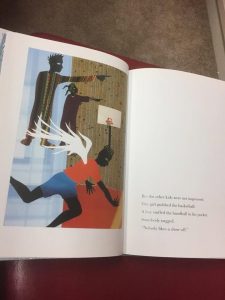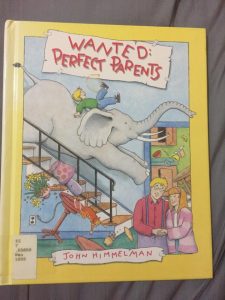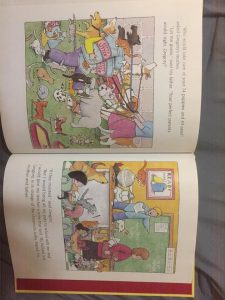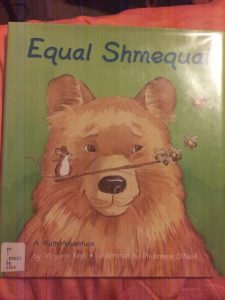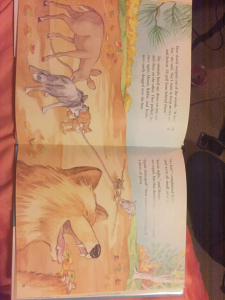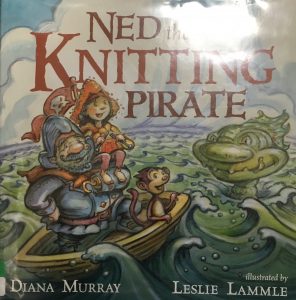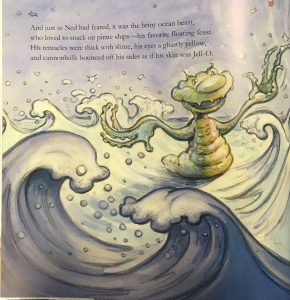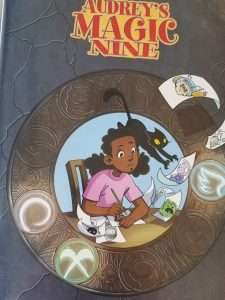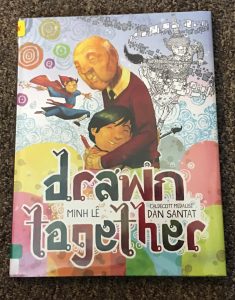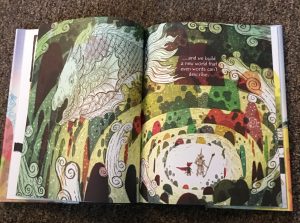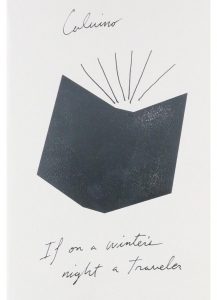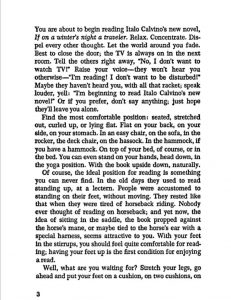Title: Wings
Author: Christopher Myers
Illustrator: Christopher Myers
Publication/ Year: Scholastic Press, New York, 2000
Number of Pages: 38
Tags/ Themes: Adventure, diversity, emotion, fantasy, friendship, picture book, Rebecca Cauthorn
Genre: Fantasy
Descriptive Annotation: This book is loosely based off of the story of Ikarus. However, it doesn’t get into the dark and depressing part of the story where his wings melt off and he dies. Instead, it looks at Ikarus when he is a kid and how he got bullied for being different. The illustrations are definitely noteworthy, done in an abstract, almost collage-y way. I think that the message of the story is beautiful because it is teaching children to stretch their wings and soar, regardless of what other kids might say about you. It encourages kids to be their true self and not be ashamed of their differences, instead embracing them. I think that if a child were to read this book they should NOT know the story of Ikarus before hand because if they did (like I did) they would be worried the entire book that he was going to die. In fact, I think that is where this story falls short. I believe it could be a much more powerful piece if the author chose to not name the boy Ikarus because in doing so it prompts a tragic underlying tone to the whole piece. I think it could have been much better if he was just any boy, but happened to have wings! Then the same things would happen to him but without the worry that he would then be his best self flying high… and then die.
Classroom Application: I probably would not read this book out loud to the class unless I wanted to use it as a supplement to a lesson about the fable of Ikarus. If this is what I was doing, I would first read the book to them and have the children discuss what it means to bully, why it is bad, and what it means to be a good friend. I would lead them in an activity where they write out their differences from one another and explain why their differences make them unique and special. Then (if I wanted to explain why the boy’s name was Ikarus) I would describe the fable. Another cool idea would be to first read this book and then read a more informative book about Ikarus and have students compare and contrast the two pieces. This might be a good activity to prompt synthesis and deeper thinking, while drawing connections between two texts.
Linguistic and Cultural Diversity Analysis: This book shows good diversity for several reasons. First, every person in this book is a different color (the main character is black, the girl is orange, the policeman is blue, many of the other boys and girls are brown or green). This adds to the abstractness of the illustration while also demonstrating the insignificance of what color you are! Another way it demonstrates diversity is by showing that Ikarus is the only kid with wings, and he gets bullied for being different. This is a very real thing which is going to happen in the classroom or at recess, so it is important to demonstrate to students how harmful that can be. The language used in this book is very eloquent, as seen in this passage, “Their word sent Ikarus drifting into the sky, away from the glaring eyes and the pointing fingers. I waited for them to point back at me as I watched Ikarus float farther and farther away”.
Illustration:
